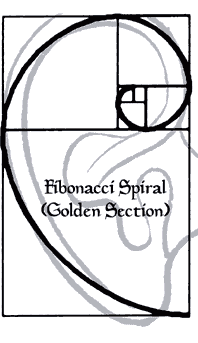Last night, I started reading Doug Hofstadter’s book, I Am A Strange Loop. I am now on the 4th chapter, and all I can say is that this is the book I NEED to be reading right now. In his book, Hofstadter discusses a topic dear to my heart, at least as of late: do our thoughts/feelings/desires control the processes in the brain, or is it the other way around? Are we nothing more than a series of neuron impulses, or is there something greater, more profound, at work? According to Hofstadter, at least as far as I’ve read, the answer is actually “yes” to both. He provides several analogies to support this theory, and I will do my best to relate, with as much accuracy as possible, what he wrote.
 First of all, he says, imagine a frictionless pool table covered with thousands, maybe millions, of tiny, magnetic marbles (which he calls “simms”). The simms “bash into each other and also bounce of the walls, careening about rather wildly in their perfectly flat world” (Hofstadter, 45). If the simms collide at a low velocity, they stick together (due to their magnetic quality) and form “simmballs” (clever pun, no?). The simmballs are not only influenced by the movement of the simms, but more particularly by movement that happens outside the surface of the table (breezes, knocks, etc). The movements are then internalized by the simmballs. This is all related to brain function, as Hofstadter writes, “Such internalization of the outer world in symbolic patterns in a brain is a pretty far-fetched idea…yet we know it somehow came to exist, thanks to the pressure of evolution.” (Hofstadter, 46).
First of all, he says, imagine a frictionless pool table covered with thousands, maybe millions, of tiny, magnetic marbles (which he calls “simms”). The simms “bash into each other and also bounce of the walls, careening about rather wildly in their perfectly flat world” (Hofstadter, 45). If the simms collide at a low velocity, they stick together (due to their magnetic quality) and form “simmballs” (clever pun, no?). The simmballs are not only influenced by the movement of the simms, but more particularly by movement that happens outside the surface of the table (breezes, knocks, etc). The movements are then internalized by the simmballs. This is all related to brain function, as Hofstadter writes, “Such internalization of the outer world in symbolic patterns in a brain is a pretty far-fetched idea…yet we know it somehow came to exist, thanks to the pressure of evolution.” (Hofstadter, 46).
Now, if one were to look very closely at this table (reductionism), all that REALLY matters are the simms. After all, the simmballs are simply balls of simms. So, this would be something akin to particle physics (which I know pretty much nothing about, nor do I need to, in order to understand Hofstadter’s analogy). A physicist might say that the simmballs are epiphenomena*, meaning “they are undeniably there [but] they are not essential to an understanding of the system…” (Hofstadter, 46). The physicists are certainly right. But, the problem with this “enormous escalation in complexity…[is that] we are condemned to seeing only untold myriads of particles…there are no natural sharp borders in the world.” (Hofstadter, 47). Another way to describe this problem would be to say that, when reduced to the level of particles, or neurons in the brain, nothing has any definition or meaning, which is something that I have struggled with since letting go of the one great explanation for everything that ever was and ever will be, otherwise known as God. It is so easy to reduce the human being to a collection of molecules, thus negating all meaning and purpose in life.
On the one hand, the fact that I am nothing but a bunch of molecules, and that my thoughts and feelings are somehow derived from neuron activity in my brain, the finale of Hofstadter’s analogy provides some glimmer of hope. He suggests that we, instead, use time-lapse photography to zoom out from the simm level, and speed up the action, the picture we see is of simballs “richly interacting with each other…triggering other simballs in a kind of ‘logic’ that has nothing to do with the [simms] churning around them…” (Hofstadter, 47). He continues, writing,
“The simms are still there, to be sure, but they are simply serving the simmballs’ dance, allowing it to happen, with the microdetails of their bashings being no more relevant to the ongoing process of cognition than the microdetails of the bashings of air molecules are relevant to the turning of the blades of a windmill…the windmill will turn no matter what…the ‘thoughtmill’ will churn no matter what, thanks to the symbolic nature of its simmballs.” (Hofstadter, 50).
So, what I have taken from this reading of Hofstadter’s theory so far, is that, on a larger scale, human beings can be reduced to almost nothing. In fact, on the molecular or atomic level, there is no difference between me, and everything else in the universe. However, there is more than one way to look at something, and human beings are particularly good at simplifying things. It has something to do with causality; both the simms and the simmballs are causal forces. But, in Hofstadter’s words, who shoves who around? That is the bigger question, and the answer will make all the difference. If we are nothing more than a bunch of molecules interacting, there’s certainly just cause for nihilism. However, it is possible, and I think Hofstadter is suggesting, that we are something greater the sum of our parts, so to speak. Updates to follow, as I read more of the book.
* Epiphenomenon, as defined by Merriam Webster, is : a secondary phenomenon accompanying another and caused by it; specifically : a secondary mental phenomenon that is caused by and accompanies a physical phenomenon but has no causal influence itself.
Hofstadter, D. (2007). I am a strange loop. New York: Basic Books.













